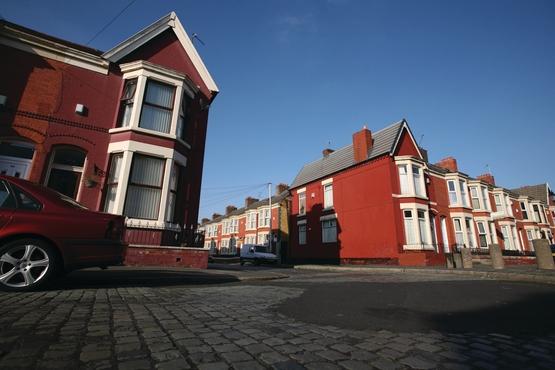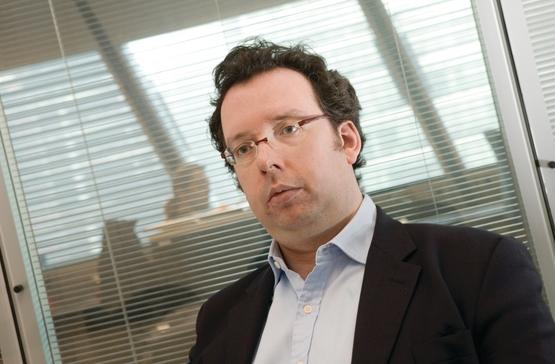The full view
Alex Sorngaard is leading Liverpool’s fight against empty homes - a battle which involves a few guys in a white van, a HIT man and some gentle persuasion.Continuing Inside Housing’s Empty Promise campaign, Martin Hilditch discovers more
Alex Sorngaard grew up just a stone’s throw away from the formerly empty property in which she now stands. She’s not one to indulge in nostalgic reminiscences about the good old days in her native Liverpool though. As she stares out the window onto the terraced street below she’s very much focused on the present - and to her it is looking pretty good.
Even the white van filled with bored-looking men parked over the road provokes a remarkably upbeat reaction. ‘That gives me a buzz, it really does.’
The reason for her excitement is that the white van men are helping her bring some of Liverpool’s 12,000 empty homes back into use. Together they make an effective team.
If your overwhelming impression of Liverpool is of streets of empty homes - and 16,778 of its 151,149 private sector homes stood empty in 1998 - it might be time to think again.
Not only has the city received funding to tackle nonexistent housing demand in some areas, but Ms Sorngaard is part of a different team that tackles individual empty homes that are pepperpotted around the city.
The council’s work is proving pretty successful. Between April and December last year it brought 465 properties back into use, outperforming most other English councils. The average number of homes brought back into use in metropolitan areas was 254 in 2006/07.
The city-wide private sector vacancy rate continues to drop and reached 6.8 per cent in 2008.
While some councils, including Liverpool, face problems with low demand that have seen streets of homes standing empty, tackling individual vacant properties is a key component of Inside Housing’s Empty Promise campaign to slash the number of empty homes in the UK. The campaign is demanding a VAT cut on refurbishment and renovation work and grant for social landlords to do up homes. It has already successfully seen government-backed guidance on the use of empty dwelling management orders issued.
Which is why it is worth a listen when Ms Sorngaard gets misty-eyed over a white van. As manager of Homeswap, she is charged with buying private sector homes that have stood vacant for lengthy periods of time. They are then refurbished and sold on to people whose homes are due to be demolished in clearance schemes elsewhere in the city.
Local heroes
The white van parked outside belongs to one of several local businesses and enterprises which refurbish empty properties for Homeswap. ‘These people are sourcing their materials locally. They are spending their money in the local economy.’ She gestures down the road. ‘All our customers are using that shop [supplying business materials] and that is keeping it open so it is not blighting the area.’
The Homeswap scheme is almost entirely self-financing. It is set to receive a minimal budget of £100,000 from the council this year, but most of its cash comes from capital receipts of the homes it sells on.
Successful though Homeswap has been - since July 2006 it has refurbished 53 homes and sold 24, with another eight due to complete in the next few weeks - it is just one part of Liverpool’s empty homes armoury. So what else does the city have up its sleeve? Step forward Terry Curnow, team leader of the council’s vacant and dilapidated properties team.
Mr Curnow has helped develop the council’s innovative approach to reducing vacant housing, part of which involves demolishing pubs. ‘We find that a lot of pubs occupy fairly prominent positions in the community or arterial routes,’ he says. ‘We tend to get the owners to bring them back into use or, if the properties are beyond it, we get rid of them. If they are in a pretty dilapidated condition, they can cause a blight over a large area.’
Blight is a word that Mr Curnow repeats time and again, and in a tone he might use if he’d just stepped in something unpleasant. Before the council gets tough on vacant homes, it must get tough on the causes of vacant homes, he suggests. And that means its first priority is to ‘remove the blight’.
‘We came up with the idea that tackling domestic properties is not normally enough,’ he says. ‘If a [vacant] commercial or industrial property is removed altogether it improves the area. That obviously helps to reduce the number of vacant homes because it increases confidence. People are more likely to invest.’
Bringing investment back
In the build up to Liverpool becoming European Capital of Culture in 2008, the team set about its task of stamping out the problem in a way that would make a Channel Five commissioning editor proud - it compiled a top 100 list. ‘There were 100 detractors that were identified as causing the city major blight,’ Mr Curnow says.
His team then set about systematically tackling the industrial, domestic and commercial premises identified. They contacted owners, issued improvement notices and even sent the wreckers to some. To date it has dealt with 65 of these properties.
The council estimates that this has attracted £6.6 million of private investment back into the areas concerned, safeguarding numerous homes and communities. Of course, as with Homeswap, the council is keen to throw its weight around to tackle individual empty homes too. Often local residents help to point the way - the council receives about 1,000 calls a year for help with vacant homes - but they are not always reported or easy to spot from the outside.
To avoid missing homes that could otherwise fall through the net, Mr Curnow’s team pours over the electoral roll and even uses tracing agents to track down absent owners. It targets homes based on the impact they have on the surrounding area and the length of time they have been empty.
The next step is to send out letters and provide advice and guidance where appropriate. But as an ‘ultimate sanction’, it will step in and force the owners to sell, normally via a compulsory purchase order. Between April and December 2008 the council issued 768 statutory notices to absent landlords, bringing 465 homes back into use.
The council has threatened to use EDMOs on a number of occasions but in practice has preferred to use improvement notices to force owners to improve their own homes, or CPOs to buy them directly because it claims they are easier to use and place less risk on the council.
The council also deploys a ‘HIT man’ to deal with the problem. While a Tony Soprano figure would probably be effective, in this case we are talking about Graham Burgess, from the council’s health improvement team.
The health improvement team claims empty properties have a ‘negative effect on the well-being of residents’. In order to improve residents’ health it tries to improve the condition of vacant and occupied homes.
The straight-talking Mr Burgess says it seems ‘ludicrous that there are houses across the city we struggle to get back into use’ when elsewhere there are private rented homes that are causing residents ‘severe health problems and in other cases probably causing their deaths’.
The team has used legislation to force some owners of dilapidated properties to sell to new owners. ‘Your living conditions affect your attitude to other people around you, whether you are sick or not, your educational attainment, your life chances and so on,’ explains Mr Burgess. ‘If we can improve people’s living conditions, it will have a lot of benefits.’
To Ms Sorngaard it is this ability to improve people’s lives along with supporting the community at large that makes it all worthwhile. ‘It is not just an investment in these properties, it is an investment in the neighbourhood,’ she says.
Ms Sorngaard admits she gets a kick when residents who have bought a Homeswap property call in with feedback. ‘We have had a number of compliments,’ she smiles. ‘It is one of the perks of the job.’
City statistics
12,000
empty homes in Liverpool
465
homes brought back into use by Liverpool Council between April and December 2008
768
compulsory purchase order notices issued to absent landlords in the same period
1,000
calls from the public about empty homes received by the council each year








